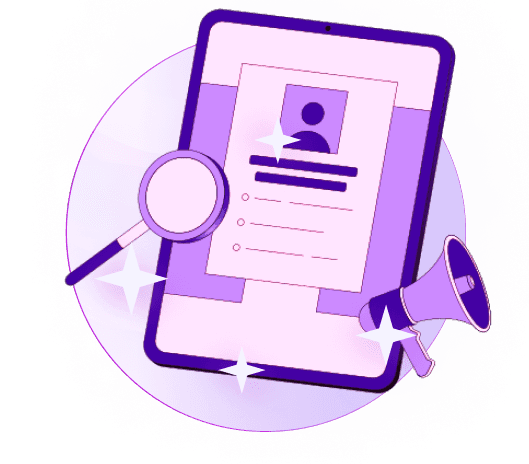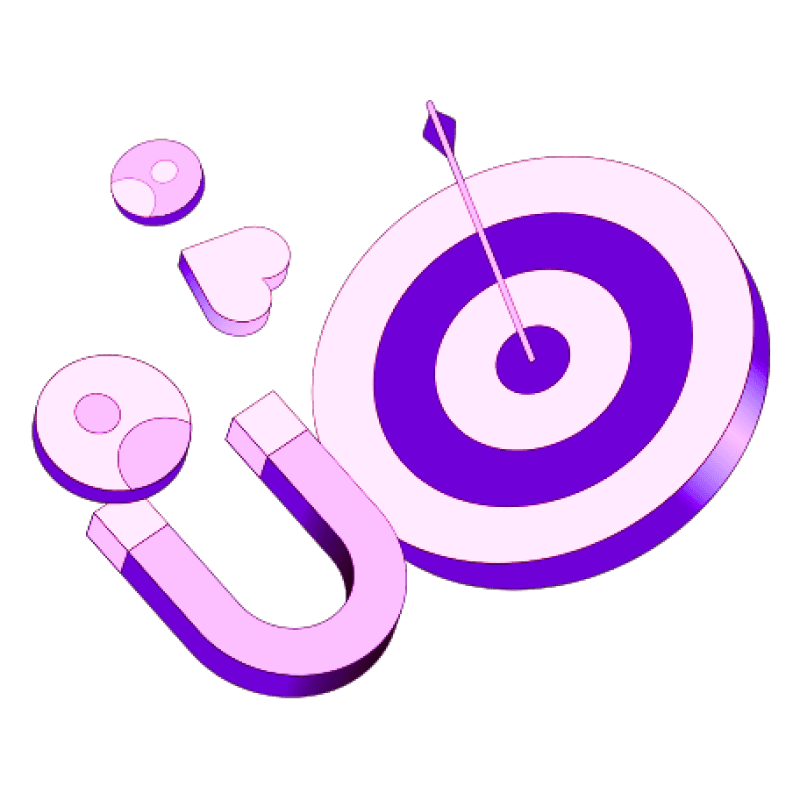Blogs
Articles

What Is Lead Scoring? Definition, Models, Best Practices and How to Build It
Sales has become tougher than ever - just ask the 53% of salespeople who struggled more last year.
Lead scoring helps teams identify which leads are most likely to become customers. Your sales team can then focus on the most promising opportunities. Companies that don't have a solid scoring model risk losing potential customers to competitors who quickly spot and connect with the best prospects.
We'll show you everything about lead scoring in this piece. You'll learn about different models, best practices, and how to build a system that gets results. Our guide works for HubSpot, Salesforce, or any other platform you use.
You'll discover how to reshape the scene of your lead qualification process and increase your conversion rates.
What is lead scoring?
Lead scoring helps companies rate potential customers based on how likely they are to buy. Sales and marketing teams use this system to identify the most promising prospects. The process turns raw customer information into actionable insights by measuring lead quality and tracking where buyers are in their purchase cycle.
How does lead scoring work? The scoring system relies on two main types of data:
Explicit data: Information provided directly by the prospect, including demographics, job title, company size, and geographic location
Implicit data: Behavioral metrics that come from monitoring prospect activities, such as website visits, email opens, content downloads, and engagement patterns
Why is lead scoring important?
Modern businesses need lead scoring to stay competitive. Companies that use effective lead scoring models achieve up to a 70% increase in lead generation ROI compared to those that don't. The conversion rates from prospects to qualified leads typically rise to 15-20% when proper scoring systems are in place.
Benefits go beyond just better conversion numbers. Lead scoring arranges marketing and sales teams around a shared understanding of lead quality. Teams can forecast revenue more accurately and give potential customers a more tailored experience.
What is lead scoring in B2C?
B2C lead scoring takes these same principles and applies them to individual consumers instead of business stakeholders. Companies assign number values to consumer actions and create experiences based on their changing scores.
Many consumer businesses waste resources by giving equal attention to all prospects. B2C lead scoring gives marketers deeper insights into consumer interests and pain points, which enables more targeted communication. This focused approach works especially well now that more consumers research products online before buying.
Types of Lead Scoring Models
Lead scoring success depends on picking the right model that aligns with your business priorities. Different models review various aspects of potential customers and give a detailed picture of their value and buying readiness.
Demographic and firmographic scoring
Your leads' fundamental characteristics shape demographic and firmographic scoring. B2C companies look at personal traits like age, gender, income, and education. B2B organizations rely on firmographic data that includes industry type, company size, annual revenue, and location.
This model spots leads matching your ideal customer profile (ICP). Large tech firms might get higher scores if enterprise software companies are your most valuable clients. Your successful customers' characteristics are the foundations of scoring criteria that enable targeted marketing campaigns.
Behavioral and engagement-based scoring
Behavioral scoring tracks your leads' actions instead of their identity. The model monitors online activities like website visits, content downloads, email opens, and social media interactions. Each action gets points based on how strongly it signals purchase interest.
A prospect visiting your pricing page multiple times shows stronger buying signals than someone browsing blog posts. The system assigns higher scores accordingly. This approach offers immediate insights into lead interest levels and helps create customized follow-up strategies based on their priorities.
Purchase intent and predictive scoring
Purchase intent scoring zeros in on actions that show buying readiness. The model analyzes behaviors like pricing page visits, demo requests, or product-specific content engagement.
Predictive scoring advances this concept by using machine learning algorithms that analyze historical data to forecast likely conversions. These advanced models spot patterns by looking at both demographic information and behavioral data from past successful sales. The system grows more accurate as it collects more data.
Negative scoring and spam detection
Negative scoring finds unqualified leads by deducting points for actions or traits that signal low conversion potential. These include email unsubscribes, frequent career page visits, or suspicious form submissions.
Sales teams save time by filtering out competitors watching your content, students doing research, or spam submissions. Negative scoring criteria help your team concentrate on genuine prospects with real buying potential.
How to Build a Lead Scoring System
A good lead scoring system doesn't just help—it plays a significant role for businesses that want to prioritize high-quality prospects. Studies show companies with lead scoring see a 77% increase in lead generation ROI.
Define your ideal customer profile
Your lead scoring model's success starts with a clear definition of your ideal customer profile (ICP). Analysis of your existing customer base will reveal common traits among your most successful clients. Sales and marketing teams should work together to identify essential characteristics such as industry, location, company size, and annual revenue. Understanding their pain points and technology patterns becomes essential. This shared approach helps everyone agree on qualified lead criteria and removes guesswork from scoring.
Identify key behaviors and attributes
After establishing your ICP, you need to determine which behaviors and attributes deserve scoring attention. These fit into two categories:
Explicit data: Demographic information like job titles, industries, and company sizes
Implicit data: Behavioral metrics such as website visits, email interactions, and content downloads
To name just one example, visiting a pricing page might earn +10 points, while a demo request could be worth +15 points. The system should assign negative points to actions that indicate poor fit, such as frequent career page visits.
Assign point values based on conversion data
Historical conversion data should guide your point values. You can calculate conversion rates for different attributes and compare them against your average rate. The technology industry leads deserve +30 points if they convert at 25% while your overall conversion rate stays at 10%. This informed approach creates a scoring system that matches your business reality.
Use CRM or lead scoring software to automate
CRM platforms like HubSpot, Salesforce, or specialized tools from Persana.ai can help implement your model with AI-assisted engagement scoring. These systems track interactions, update scores instantly, and trigger actions when leads reach qualification thresholds. Up-to-the-minute predictive scoring uses machine learning to analyze thousands of data points and finds your best leads automatically.
What are lead scoring best practices?
Lead scoring best practices play a crucial role in separating qualified prospects from casual browsers. Companies that use effective lead scoring methods see a 77% increase in lead generation ROI compared to those without structured systems.
Start by taking a good look at your current customer base. Find common traits among successful customers and think over factors like industry, company size, and buying patterns. Group your customers into clear categories like high-value retainer clients and one-time buyers to understand scoring priorities better.
Your sales team should be part of the development process. Their direct work with prospects makes their input about qualified leads valuable. Even the best systems will struggle without the sales team's support.
Negative scoring stands out as a vital but often overlooked practice. Research shows 73% of new leads aren't ready to talk to sales right away. Your system should reduce scores when leads go cold - take off 10 points after 60 days of silence and 25 points after 90 days.
Keep your scoring approach simple. Don't score every single interaction. Focus on what really matters - like visits to pricing pages (+30 points) versus reading general industry content (+10 points).
Modern AI tools from Persana.ai can spot patterns and predict which leads will likely convert. These systems get smarter and more accurate over time.
How do you calculate a basic lead score?
You need to understand your current conversion patterns to create a precise lead scoring formula. The most effective lead scoring systems combine mathematical precision with practical business insights that help prioritize promising opportunities.
Here are the fundamental steps of the calculation process:
Establish your baseline conversion rate - Your baseline percentage comes from dividing new customers by total leads generated. This becomes your measurement standard to compare individual attributes.
Analyze historical data patterns - Look at your existing customer base to spot common traits and behaviors that guide successful conversions. You should also identify negative signs from leads that didn't convert.
Calculate individual close rates - Each attribute affects conversion differently. Your webinar participants might have a 75% close rate compared to your 50% baseline, which shows they have much higher potential.
Assign point values proportionally - The points you give should reflect how much an attribute exceeds your baseline. Webinar attendees who convert at 15% versus your 2% baseline might earn 15 points.
Implement negative scoring - Poor-fit indicators like career page visits or email unsubscribes should reduce the score.
Conclusion
Lead scoring is a vital part of modern sales and marketing strategies. This piece shows how lead qualification turns raw customer data into applicable information. Companies that use good scoring models see up to 70% better lead generation ROI and 15-20% higher conversion rates from prospects to qualified leads.
Your lead scoring system should grow with your business. Markets change, customer behaviors evolve, and scoring models need regular updates to stay accurate. The best approach is to define your ideal customer profile first and build your model using both demographic data and behavioral signals.
A simple approach works best at the start. Score only the most significant behaviors instead of tracking every interaction. Your sales team will appreciate a system that shows qualified opportunities without unnecessary complexity.
The right technology helps scale your lead scoring efforts. Tools like HubSpot, Salesforce, or specialized solutions from Persana.ai will give you live score updates and trigger actions when leads meet qualification thresholds.
Regular evaluation periods help assess how well your scoring system works. You can learn about ways to improve your model's accuracy by analyzing which scored leads convert. As you progress, you might want to use machine learning algorithms that spot conversion patterns with better precision.
FAQ
What are the tools for lead scoring?
The right lead scoring software should include AI-powered lead management capabilities. These tools study your sales team's conversion patterns and help predict which leads need immediate attention. Good lead scoring tools blend with your existing CRM to maintain synchronized and current data.
The market offers several types of lead scoring software:
Predictive Lead Scoring: Uses artificial intelligence to forecast conversion likelihood
Behavioral Lead Scoring: Tracks and analyzes prospect interactions
Demographic Lead Scoring: Reviews leads based on demographic criteria
HubSpot's premium editions of Marketing Hub come with lead scoring features. The system helps teams sort leads through fit and engagement scores, which reduces sales cycles. Salesforce stands out with its strong lead scoring features and customizable models. Teams can also consider Zapier, Marketo, and specialized tools like Cognism.
Quality platforms come with detailed reporting dashboards that show metrics and create custom reports for team members. Beyond simple scoring, systems should automate prospect research and create lead record summaries to spot closing opportunities.
What is lead scoring Mckinsey?
McKinsey uses advanced predictive algorithms to build detailed customer profiles. Their method helps companies identify target customers, perfect contact timing, and understand what drives conversion rates.
McKinsey's lead scoring models combine product analytics data with account intelligence and marketing behavior. Their system applies machine learning to study various lead characteristics and matches them with transaction data to create priority lists for account executives.
The system continues to evolve, and companies using McKinsey's predictive lead scoring algorithms see 15-20% better lead conversion rates. McKinsey's innovative clients now tap into AI-enabled agents with natural language processing to automate early lead generation tasks and handle simple questions.

Create Your Free Persana Account Today
Join 5000+ GTM leaders who are using Persana for their outbound needs.
How Persana increases your sales results
One of the most effective ways to ensure sales cycle consistency is by using AI-driven automation. A solution like Persana, and its AI SDR - Nia, helps you streamline significant parts of your sales process, including prospecting, outreach personalization, and follow-up.



